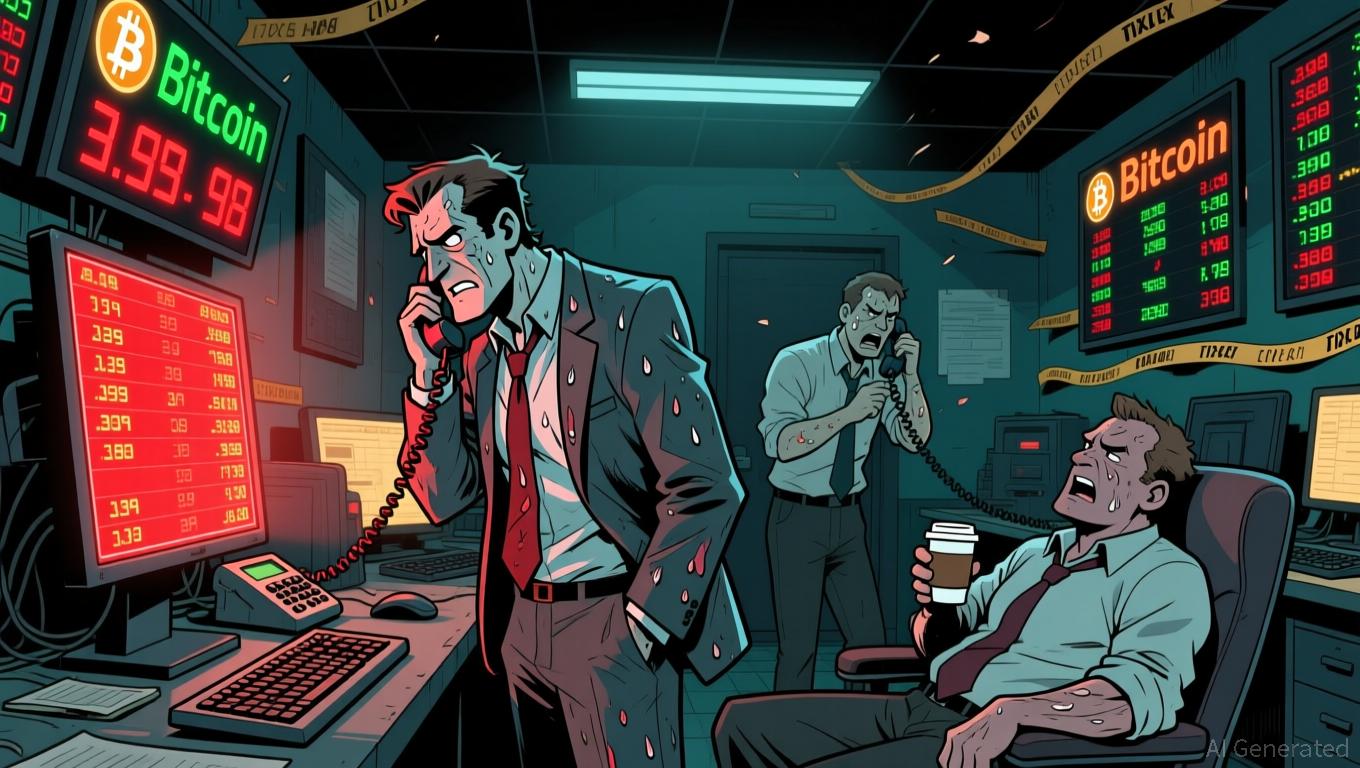Pi Network’s Adherence to MiCA: Leading the Way in Eco-Friendly Blockchain Innovation
- Pi Network files MiCA compliance with EU, aiming to enter regulated markets and expand across Europe. - Launches Valour Pi ETF on Sweden's Spotlight Stock Market, marking its first institutional trading venture. - Whitepaper highlights 99.9% lower energy use than Bitcoin (0.0024 TWh/year) and non-custodial wallet design. - v23 protocol upgrade (2025) and potential OKX Europe listing expected to boost compliance and liquidity. - Energy-efficient model aligns with global decarbonization goals, positioning
Pi Network Advances with MiCA Submission - What Follows After Approval?
Pi Network has officially submitted for compliance under the European Union’s Markets in Crypto-Assets Regulation (MiCA), marking a significant milestone as it seeks to enter regulated markets and broaden its presence throughout Europe. Having spent more than seven years preparing for public launch,
The latest Pi Network MiCA Whitepaper details the project’s dedication to transparent operations within the EU’s regulatory landscape. Notably, Pi’s energy consumption is exceptionally low, estimated at just 0.0024 terawatt-hours (TWh) annually—a reduction of 99.9% compared to Bitcoin’s approximate 185 TWh. This makes Pi one of the most eco-friendly blockchain networks,
Key regulatory developments are anticipated to progress rapidly in the near future. The v23 protocol update, expected by late 2025, will further reinforce Pi’s regulatory compliance.
The MiCA application highlights a wider industry shift toward sustainability and regulatory compliance. As global authorities increase oversight of digital assets, projects that prioritize environmental stewardship and legal adherence are gaining traction. Pi’s energy-saving approach stands in stark contrast to the high consumption of proof-of-work blockchains,
Disclaimer: The content of this article solely reflects the author's opinion and does not represent the platform in any capacity. This article is not intended to serve as a reference for making investment decisions.
You may also like
Bitcoin Update: Federal Reserve's Balancing Act and Death Cross Indicate Extended Bitcoin Downturn
- Bitcoin fell below $91,000 amid $3B ETF outflows, technical "death cross" signals, and shifting Fed policy expectations. - BlackRock's IBIT saw record $523M outflows, while Mubadala tripled Bitcoin holdings despite market volatility. - Fed officials split on December rate cuts (46% chance now vs. 93.7% earlier), with Waller citing weak labor markets. - Stablecoin balances hit 11-month lows, Nansen traders added $5.7M short positions, and XRP derivatives stagnated. - Bitcoin and Ethereum entered technical

Hyperliquid News Today: Individual Investors Drive Equity Perpetuals Amid Heightened Risk Discussions
- Market participants advocate unrestricted stock leveraged perpetuals as a simpler alternative to 0DTE options, citing growing retail demand for leveraged equity exposure. - Decentralized platforms like trade.xyz and Felix dominate equity perpetuals trading, with Nasdaq 100 perpetuals generating $75M daily volume versus $5.5M on Ostium. - SafePal integrates Hyperliquid's perpetuals exchange into its wallet, reflecting DeFi's hybrid CeFi-DeFi evolution and expanding tokenized asset risk products. - Recent

Solana News Update: Solana's Swift Growth: Will Advancements Surpass Security Obstacles?
- Solana emerges as a high-performance Ethereum alternative, gaining traction in DeFi and Web3 due to scalability and low fees. - 21Shares launches a regulated Solana ETF (TSOL), offering institutional access but exposing investors to volatility and smart contract risks. - Bitcoin Munari (BTCM) aims to build institutional-grade Solana infrastructure with EVM compatibility and delegated proof-of-stake by 2027. - Despite growth, Solana faces network congestion and security challenges, though regulated produc

Bitcoin Updates Today: The Future of Bitcoin Miners in 2026 Depends on Competing with AI for Control Over Energy Resources
- Bitcoin miners face 2026 survival challenges as energy costs rise and AI data centers compete for cheap power, with U.S. wholesale electricity projected to increase 8.5%. - Structural risks like power contracts and mining pool concentration (6 pools control 95% of block production) threaten industry stability alongside capital-intensive expansion. - Federal policy gaps contrast with state-level initiatives (e.g., Texas) while firms pivot to AI/HPC, with mixed results as seen in Bit Digital's earnings and
